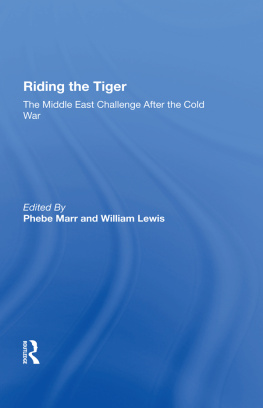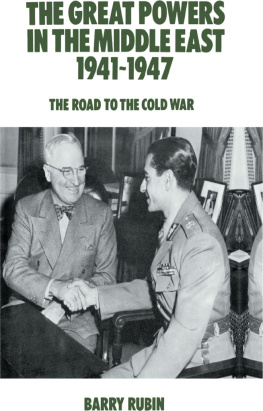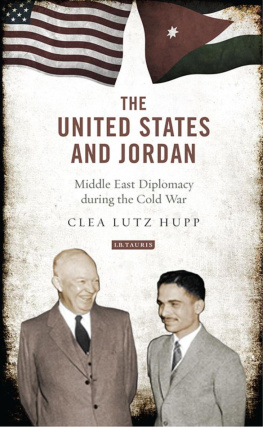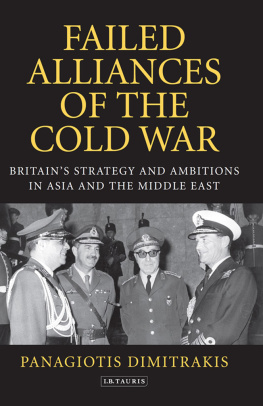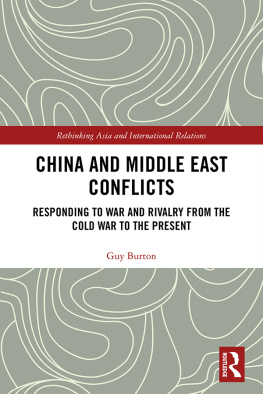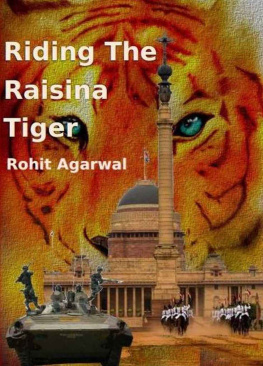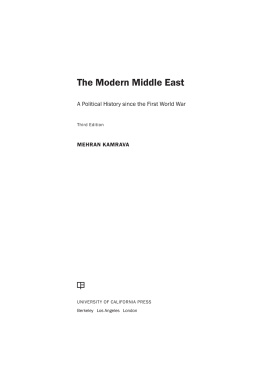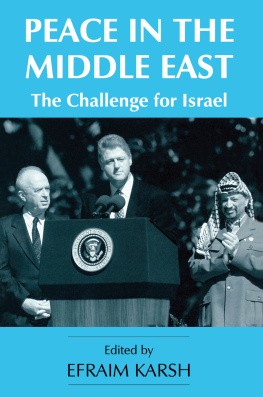First published 1993 by Westview Press
Published 2019 by Routledge
52 Vanderbilt Avenue, New York, NY 10017
2 Park Square, Milton Park, Abingdon, Oxon OX14 4RN
Routledge is an imprint of the Taylor & Francis Group, an informa business
Copyright 1993 Taylor & Francis
All rights reserved. No part of this book may be reprinted or reproduced or utilised in any form or by any electronic, mechanical, or other means, now known or hereafter invented, including photocopying and recording, or in any information storage or retrieval system, without permission in writing from the publishers.
Notice:
Product or corporate names may be trademarks or registered trademarks, and are used only for identification and explanation without intent to infringe
Library of Congress Cataloging-in-Publication Data
Riding the tiger : the Middle East challenge after the Cold War /
edited by Phebe Marr and William Lewis.
p. cm.
Includes Index.
1. Middle EastPolitics and government1979- I. Marr, Phebe.
II. Lewis, William Hubert, 1928-
DS63.1.R53 1993
956.053dc20
92-46572
CIP
ISBN 13: 978-0-367-28608-8 (hbk)
This book is the outgrowth of a collaborative effort by a small group of national security analysts associated with the Institute for National Strategic Studies of the National Defense University, government officials responsible for pondering defense and foreign policy issues, and academics with long experience in Middle Eastern affairs. In the past several years these scholars, policy analysts, and military planners have been focusing on the impact on U.S. goals and interests in the Middle East of three seminal eventsthe ending of the cold war, the collapse of the Soviet Union, and the invasion of Kuwait by Saddam Husayn and the subsequent Gulf War. The authors individual studies have been nourished by frequent intellectual exchanges with one another and by their participation in numerous academic meetings designed to explore the future of U.S. relations with the Middle East.
It is their conclusion that these dramatic events have masked basic forces that have been operating in the Middle East and in Southwest Asia over the past several decades. The group of analysts and academic specialists involved in the preparation of this book believe that U.S. policymakers should concentrate on these forces in their formulation of regional policy for the decade ahead. Several events of the post-Gulf War period, notably the collapse of the Soviet Union, the initiation of a serious Arab-Israeli peace process, and the emergence of new Muslim nations in Central Asia and the Caucasus, have opened opportunities for new U.S. policy initiatives in the region that extends from North Africa through the Middle East to Southwest Asia. Both the emerging challenges and the opportunities should prompt a reexamination of traditional U.S. interests in the light of a more disorderly and complex international environment. This volume will define the forces that are likely to shape the region in the coming decade and will suggest a U.S. policy agenda for the 1990s.
The editors themselves have contributed to this study, but the successful completion of this book is the fruit of the intellectual input of the several contributors who have brought to it their knowledge of a variety of academic disciplines and their experience in various sub-regions of the diverse Middle East area. We would like to acknowledge their patience and their willingness to undertake the revisions made necessary by rapidly changing events. In addition, the appearance of this volume would not have been possible without the strong support of the Director of the Institute for National Strategic Studies (INSS), Dr. Alvin Bernstein, and the Institutes Deputy Director, Dr. Stuart E. Johnson, whose enthusiasm and encouragement were essential. We are also grateful to the support staff of INSS, and in particular to Linda Chambers, for their patience and help in preparing the many final versions of the manuscript.
As is traditional and fully warranted, the undersigned assume full responsibility for the overall organization, cohesion, and quality of the study. The ideas and information in this volume are those of the authors and editors and do not reflect the views of the National Defense University, the Department of Defense, or the U.S. government.
Phebe Marr
William Lewis

The Historical Record
Throughout the nineteenth and twentieth centuries, U.S. involvement in the Middle East was dominated by religious, philanthropic, and academic organizations. Presbyterians first arrived in Lebanon (then part of Syria) in the 1820s, subsequently founding the American University of Beirut. In the late nineteenth century, missionaries from the Reformed Church established a string of missions in the Persian Gulf from Iraq to Oman.
Prior to World War II, official interest in the Middle East was mainly limited to the defense of commercial interests, principally oil. There was a brief period of strategic interest in the Middle East during World War I when the Allies were cut off from Middle East oil and the United States, then the leading producer, became the principal supplier for the Allied war effort. Strategic interest reappeared during World War II for much the same reasons. But in the interim, there was little official concern beyond that of assuring the U.S. oil companies that they were granted the same competitive advantages as were European oil companies.
Official appreciation of the geostrategic importance of the region changed dramatically during World War II. The Middle East was increasingly viewed by the U.S. and British military planners as a significant theater of operations, one which would serve as a launching pad for the insertion of Allied forces into southern Europe as well as a transit zone for movement of desperately needed military supplies to support the armed forces of the Soviet Union. To meet both objectives, some accommodation with nationalist leaders in North Africa, the Near East, and Iran, still under European tutelage or influence, was required, and under the direction of President Franklin D. Roosevelt, U.S. assurances on post-war political freedoms were extended in an early attempt to balance strategic interests and democratic values.
The Middle East assumed even greater strategic significance during the period that one U.S. scholar has characterized as the long peace.1 The cold war generated requirements for access to military facilities in the region, alliance formation on the part of the United States, and transfers by Washington of military supplies to favored friends and allies. By the end of the 1950s, the United States had a substantial military presence in the region. The political and military hinges of strategy had a northern and southern component. The northern tier embraced Greece, Turkey, and Iranwith Tehran as the quintessential pivot, and the southern tier embraced the monarchies of Saudi Arabia and Ethiopia.


